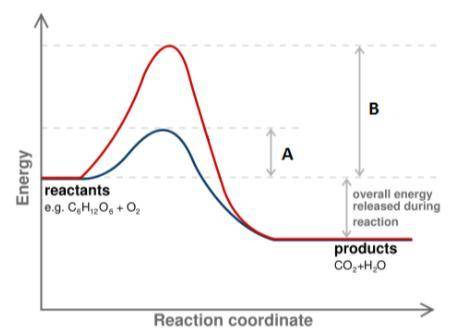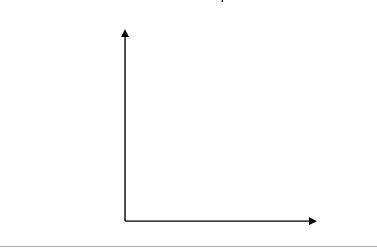
1. Mark the point on the Y axis that indicates the free energy of the reactants.
Mark the point on the Y axis that indicates the free energy of the products.
2. What letter represents the activation energy of the reaction in the presence of enzyme?
3. What letter represents the activation energy of the reaction with no enzyme?
4. Is the reaction exergonic or endergonic? (remember exer-means energy is released, exits, and endo-means energy remains IN the product, its stored in there)
5. Use the started graph below to Draw a chemical reaction curve of the opposite process (draw an exergonic reaction if the above is endergonic or draw an endergonic reaction if the above is exergonic).



Answers: 3
Another question on Biology

Biology, 21.06.2019 14:00
Which of the following statements best describes the relationship between the environment and human health? a. the environment is the only factor that affects human health. b. many aspects of the environment can have an impact on human health. c. human health is impacted by changes in climate. d. the environment has no impact on human health. select the best answer from the choices provided
Answers: 2

Biology, 21.06.2019 22:30
Models are non-visual ways of coummincating how someone thinks about something in the natural world
Answers: 1

Biology, 22.06.2019 01:30
Scenario 5 1) take 10 red and 10 black beans and place them, mixed, on the table. record the starting phenotype # and frequencies (% of your total population) of your starting population in the table provided (generation 0). 2) act as a predator. “capture” as many organisms as you can until you have reduced the population to three organisms. put them aside. at this point, the predators die. 3) the remaining organisms each produce 2 clonal offspring. multiply your organisms accordingly and allow them to mix on the table. calculate and record the resultant phenotype # and frequencies (% of your total population) of your population in the table provided (generation 1). 4) repeat the reproduction event, allowing each of your organisms to produce 2 clonal offspring. calculate and record the resultant phenotype # and frequencies (% of your total population) of your population in the table provided (generation 2). 5) repeat the reproduction event, allowing each of your organisms to produce 2 clonal offspring. calculate and record the resultant phenotype # and frequencies (% of your total population) of your population in the table provided (generation 3).
Answers: 1

Biology, 22.06.2019 02:30
What were the main components of earth’s earliest atmosphere? oxygen and ammonia hydrogen and helium oxygen and nitrogen hydrogen and nitrogen
Answers: 1
You know the right answer?
1. Mark the point on the Y axis that indicates the free energy of the reactants.
Mark the point on...
Questions



Mathematics, 13.10.2020 01:01





Mathematics, 13.10.2020 01:01








English, 13.10.2020 01:01


Mathematics, 13.10.2020 01:01

Computers and Technology, 13.10.2020 01:01



